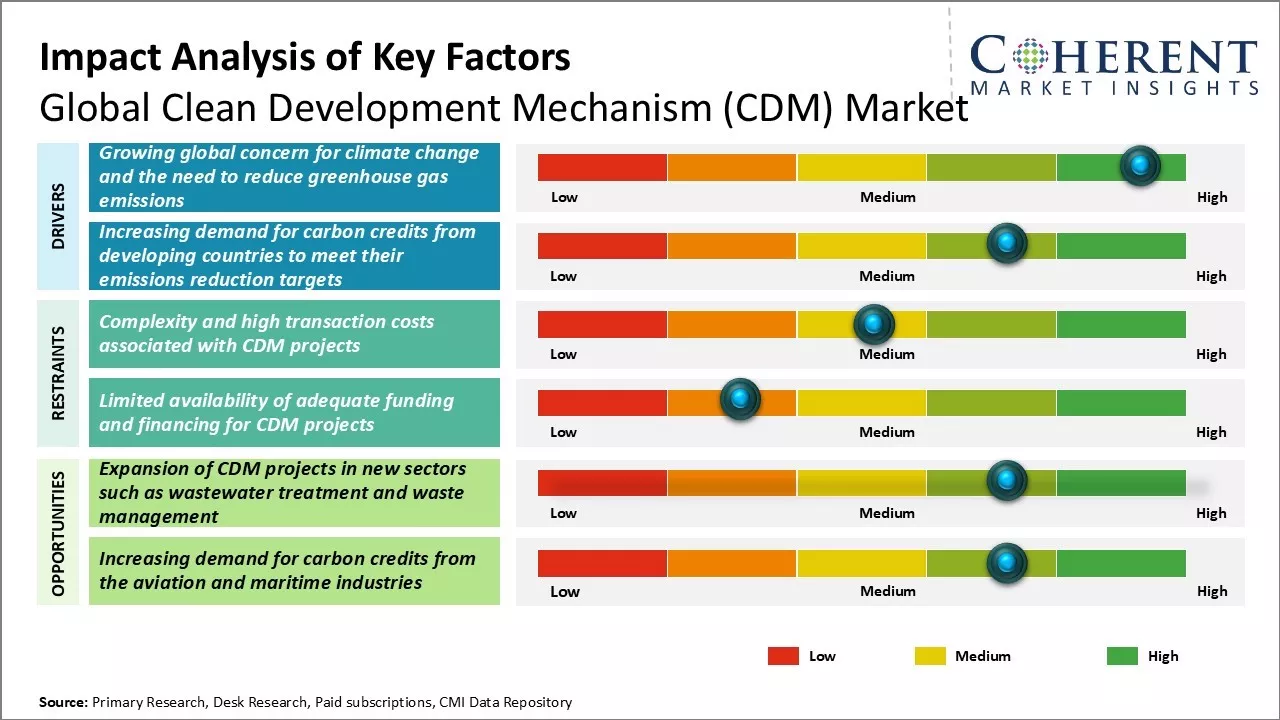The global Clean Development Mechanism (CDM) market is estimated to be valued at US$ 245.06 Bn in 2025 and is expected to reach US$ 439.71 Bn by 2032, exhibiting a compound annual growth rate (CAGR) of 8.7% from 2025 to 2032.

To learn more about this report, Request sample copy
Growing environmental concerns and emphasis on the adoption of clean energy are expected to drive the demand for carbon reduction programs. Many countries globally have pledged to follow the Paris Agreement and reduce their carbon footprint. This is increasing the demand for energy efficient technologies and renewable energy. The corporations are also investing increasingly in acquiring carbon credits to meet their internal carbon reduction targets. Various support mechanisms by regulatory bodies like tax benefits and carbon trading are further boosting the growth of Clean Development Mechanism (CDM) market. However, concerns over additional costs and lack of standardized rules for carbon credits can hamper the market growth. But overall, the Clean Development Mechanism (CDM) market is well positioned to grow at a steady rate during the forecast period due to the growing need for sustainability across various industries.
Growing global concern for climate change and the need to reduce greenhouse gas emissions
With the growing impacts of climate change becoming more apparent each year, there is an increased focus on reducing greenhouse gas emissions from governments and corporations around the world. Climate scientists warn that global warming needs to be limited to well below 2°C to avoid the worst effects of climate change such as more frequent extreme weather events, rising sea levels, and damage to agriculture and wildlife. It is widely recognized that collective global action is required to transition to a low carbon economy and meet the emissions reduction targets set out in the Paris Agreement.
The effects of climate change are already being felt through rising temperatures, melting glaciers and sea ice, more intense heatwaves, and forest fires. Communities around the world are experiencing disruption to food production and water security due to changing weather patterns. As the impacts grow increasingly difficult to ignore, public concern over climate change is rising significantly. Younger generations especially are demanding urgent action from governments and companies on environmental issues.
To achieve the goals of the Paris Agreement, every sector of the global economy needs to reduce their carbon footprint. While renewable energy is being deployed at scale, lowering emissions from heavy industries such as cement, steel, and chemicals is extremely challenging using existing technologies. The CDM provides a proven mechanism to generate finance for low carbon projects in these sectors and unlock affordable solutions through overseas collaboration and investment. By facilitating technology transfer between developed and developing nations, the CDM can help accelerate the innovation required to decarbonize the industry globally. With climate change presenting a critical long-term threat, the need for cooperative international frameworks like the CDM will continue growing in the coming decades.
Joining thousands of companies around the world committed to making the Excellent Business Solutions.
View All Our Clients